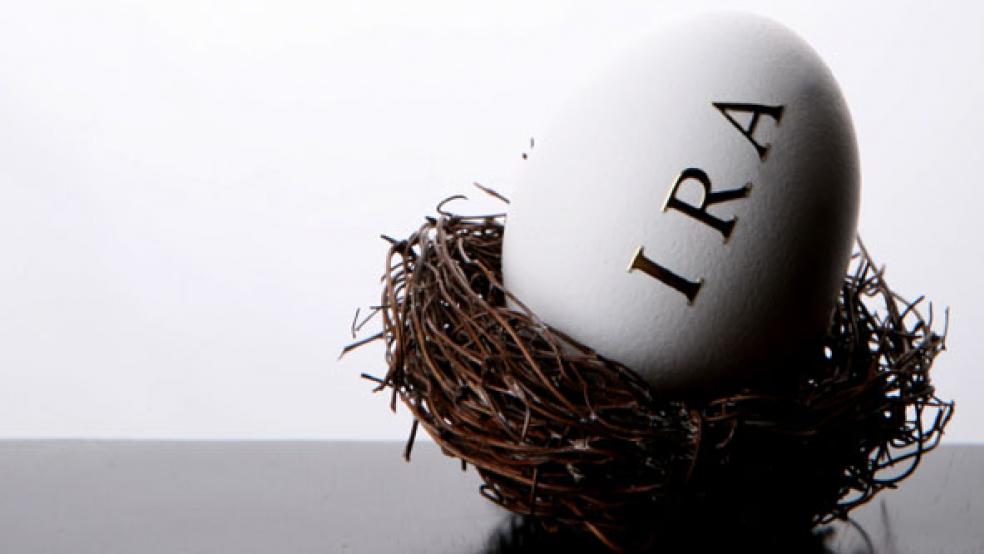Individual retirement accounts are a great savings vehicle for millions of Americans, particularly for those who don’t have access to a 401(k) at work or whose employer-sponsored 401(k) has high fees or lousy options.
The potential for making investment mistakes in an IRA, however, is generally greater than the potential of doing so with a 401(k). That’s because IRAs tend to have nearly unlimited investment options. For investors who have a well-researched specific plan for their retirement assets, that can be a huge perk. For more novice investors, the array of possibilities can translate into a greater chance to do serious damage, especially in a volatile market like this one.
Related: IRAs: Everything You Need to Know in 2015
Here are the biggest mistakes people make when they try to “play investor” with their IRA:
Investing in Complicated Products
Most big financial services companies offer IRAs that allow you to invest mostly in mutual funds or individual stocks, but some smaller firms will set you up with a “self-directed” IRA, which you can use to invest in alternative investments, including everything from commodities to real estate.
Proceed with caution. While the administrators of your self-directed IRA will help you with the paperwork for the investments, it’s up to you to perform due diligence. If you aren’t comfortable paging through a P&L statement or grilling a business owner about his future revenue streams, you’re probably better off sticking with more vanilla investments.
“Don’t feel like because you have access to all these investments that suddenly you need to take on the role of chief investment officer,” says Stuart Ritter, a senior financial planning analyst at T. Rowe Price. “Getting help from an advisor or using a the simplicity of a target date fund can put a plan in place for you.”
Buying Individual Stocks
Unlike most 401(k)s, IRAs offer consumers the option to invest in individual stocks, and that may be tempting for investors who think they can sort the next Apple from the next Radio Shack. Investing a small portion of your portfolio in individual stocks as a hobby is fine for novice investors, but putting your retirement fund into individual stocks is a dangerous game.
You’re essentially betting that you’ll beat professionals (and algorithms) in knowing not only which stocks to purchase, but also which ones to sell and when. “It’s generally been proven that stock-picking is not a reliable strategy for the majority of an investor’s portfolio,” says Nathan Munits, president of Life and Wealth Planning in New York. “I personally view that as more of a speculative endeavor.”
Related: Watch that Free Money for IRA Rollovers
Overpaying in Fees
There are some great low-fee options out there when it comes to 401(k)s and IRAs, but there are also a lot of ways to get snookered into paying more in fees than you should. Some advisors charge a 1 percent fee (or more) to help you select investments, which can carry another 1 percent fee of their own.
Fees of 2 percent per year can really eat into your returns over a span of several decades. “You have to decide whether the advisor is adding value for you,” says Tony Webb, a senior research economist with the Center for Retirement Research at Boston University. “If he is getting you to save or preventing you from doing stupid things like selling at the first sign of a downturn, that might be money well spent.”
Making Emotional Decisions
Even if you’re investing in low-cost mutual funds and ETFs, it’s important in a volatile market like this one to be sure that you’re sticking with an asset allocation that you’ve chosen during calmer times. Making knee-jerk moves with your money has historically cost mom-and-pop investors dearly. “You’ve got to think long term,” says Greg McBride, chief financial analyst at Bankrate.com. “The power of compounding works best when you’re compounding higher rates of return. The danger of jockeying in and out of investments is that you’re not harnessing those higher rates of return and you’re paying more in commissions.”
Related: How Saying ‘No’ Can Save Your Retirement
If you’re not working with a financial advisor — or even if you are — use an asset allocation calculator to figure out an appropriate mix for your age and risk tolerance. Then pick a few funds (or even just one target date fund) and stick with it. You can check in to rebalance periodically, but otherwise, your best bet is just to let your chosen funds ride for the long haul.
Not Thinking of Your Overall Portfolio
Your IRA is likely just one portion of your retirement fund. Take a big picture look at not only your IRA, but also your 401(k) and any retirement accounts that your spouse owns to be sure that you’re properly diversified across all of them. If you’re 401(k), for example, has great stock offerings but less stellar bond options, overweight the 401(k) in stocks and find appropriate bond investments in your IRA.
In addition to thinking about your asset allocation mix, consider the overall tax treatment of your investments. Tax-sheltered accounts are a great place for investments like Treasury Inflation-Protected Securities (TIPS) and high-yield bonds, while dividend-paying stocks might be better off in a taxable portfolio, given the favorable tax rates that currently apply to dividends compared with earned income.





